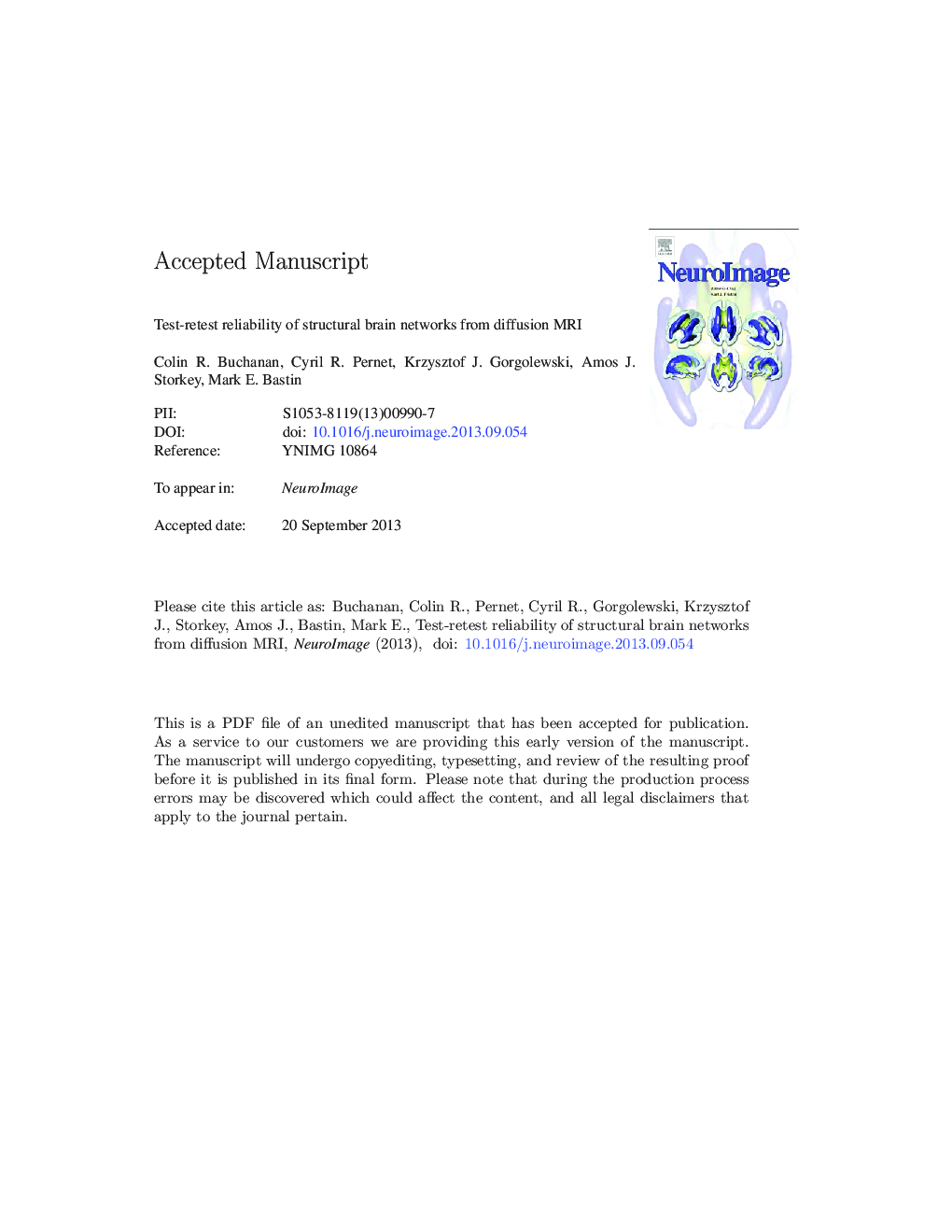| Article ID | Journal | Published Year | Pages | File Type |
|---|---|---|---|---|
| 6027770 | NeuroImage | 2014 | 28 Pages |
Abstract
Our findings suggest that test-retest performance was improved when: 1) seeding from white matter, rather than grey; and 2) using probabilistic tractography with a two-fibre model and sufficient streamlines, rather than deterministic tensor tractography. In terms of network weighting, a measure of streamline density produced better test-retest performance than tract-averaged diffusion anisotropy, although it remains unclear which is a more accurate representation of the underlying connectivity. For the best performing configuration, the global within-subject differences were between 3.2% and 11.9% with ICCs between 0.62 and 0.76. The mean nodal within-subject differences were between 5.2% and 24.2% with mean ICCs between 0.46 and 0.62. For 83.3% (70/84) of nodes, the within-subject differences were smaller than between-subject differences. Overall, these findings suggest that whilst current techniques produce networks capable of characterising the genuine between-subject differences in connectivity, future work must be undertaken to improve network reliability.
Related Topics
Life Sciences
Neuroscience
Cognitive Neuroscience
Authors
Colin R. Buchanan, Cyril R. Pernet, Krzysztof J. Gorgolewski, Amos J. Storkey, Mark E. Bastin,
